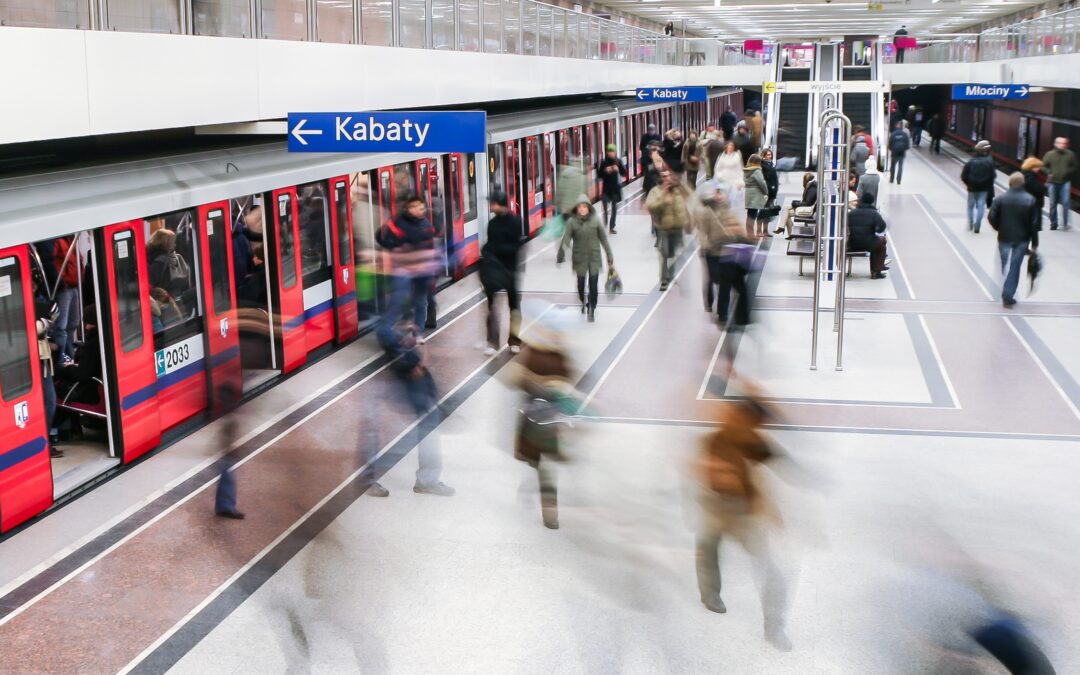Warsaw’s mayor, Rafał Trzaskowski, has unveiled plans to more than double the size of the city’s metro system by 2050. The current two lines (with a third already planned) would be expanded to five; the number of stations would rise from 39 to 103; and the length of track would extend from 42 to 113 kilometres.
The expansion will ensure that the metro system reaches 17 of the city’s 18 districts, says Trazaskowski, and that over half of Varsovians will live within one kilometre of a station, up from 28% currently. For many residents, it would halve travel time to the city centre.
Tak będzie wyglądać metro w @warszawa w 2050 roku. 5 linii, 103 stacje, 113 km sieci. Metro będzie dojeżdżać do 17 z 18 dzielnic. #NoweStudiumWarszawy #StolicaWygody pic.twitter.com/pSIZZSsHyD
— Rafał Trzaskowski (@trzaskowski_) February 13, 2023
The Warsaw Metro first opened in 1995 and remains Poland’s only rapid transit underground network (though Kraków is also planning a “premetro” system). Its first line, M1, running on a north-south axis, was supplemented by a second, M2, running east-west, in 2015.
In 2021, Trzaskowski announced plans for the construction of a third line, which will connect the city centre with the district of Praga-Południe on the east bank (known by locals as the right bank) of the Vistula river, and later also with Ochota and Mokotów.
The new plan unveiled yesterday will now go through a period of consultation involving environmental bodies, the conservator of monuments, and the authorities of the Mazowieckie Province in which Warsaw is located. That will be followed by “social consultations” with residents of the city in May and June.
Warsaw has announced plans to build a third line of its metro system.
The first stage will see six new stations built on the right (east) bank of the Vistula, connecting Praga-Południe, the city's second-largest district, with the centre https://t.co/bM1KRylzVY
— Notes from Poland 🇵🇱 (@notesfrompoland) March 15, 2021
Trzaskowski says that he has “promises from the European Union that we will get the money that is necessary for such an expensive project”. He also expressed hope that Poland’s money from the EU’s post-pandemic recovery fund – currently frozen over rule-of-law concerns – can be used.
The mayor says that one of the ideas behind the plan is “the concept of a 15-minute city” in which residents can access all important services within a quarter of an hour by foot or public transport. Last month, he announced plans to make the city centre a “clean transport zone” in which older cars will be banned from mid-2024.
A deputy government minister, Sebastian Kaleta, however, expressed doubts about the ambitions of Trzaskowski, who is a deputy leader of Poland’s main opposition party.
“You love to draw plans but are bad at executing them,” tweeted Kaleta, who noted that construction of the third metro line has not yet started and claimed that work has only begun on one of several new tram lines promised by the mayor.
Uwielbia Pan rysować plany,ale słabo z realizacją. Do 2050 roku? Wypadałoby wywiązać się z obietnic złożonych do 2024 roku. Nie rozpoczął Pan nawet budowy 3 linii (umowy na 2 linię podpisywała jeszcze HGW). Z kilku obiecywanych linii tramwajowych niedawno rozpoczęto budowę jednej https://t.co/GG7Q85qDZ2
— Sebastian Kaleta (@sjkaleta) February 13, 2023

Daniel Tilles is editor-in-chief of Notes from Poland. He has written on Polish affairs for a wide range of publications, including Foreign Policy, POLITICO Europe, EUobserver and Dziennik Gazeta Prawna.




















